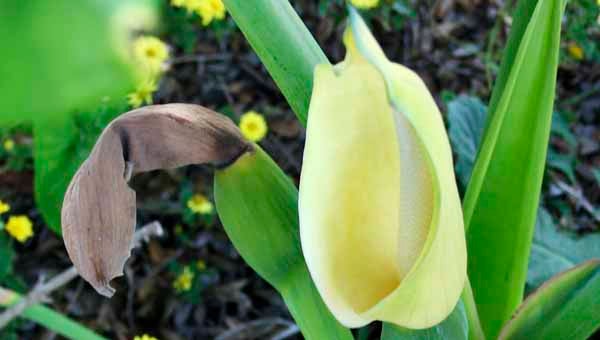A fall surprise
Published 11:00 pm Thursday, November 1, 2012

Joyce Austin was taken by surprise when she found that the elephant ears at the front of her house had bloomed for the first time in about 45 years. One of Austin’s plants had seven blooms and the other has had two. Hopefully, there are more blooms to come.
Joyce Austin has lived in the same house in Troy for about 45 years. For most of those years, elephant ears have been among the summer and fall foliage at the front of her house.
The elephant ears are similar in size and shape to an elephant’s ear and dominate the space where they grow. It’s hard to overlook them.
“I’ve never been so surprised in my life as when I came outside and saw this large, yellow bloom on one of the elephant ears,” Austin said. “I’ve had these plants all these years and they have never bloomed before. I was shocked. I didn’t know they bloomed.”
Austin said one of the elephant ears has produced seven large, yellow blooms this fall and the other has produced two.
“The blooms didn’t come at the same time,” she said. “They came one at time and, when one bloom dies, it leaves a big bulb about the size of a cucumber on the trunk. I’ve never seen anything like it.”
Dr. Alvin Diamond, assistant professor, Troy University Department of Biological and Environmental Sciences and director of the Troy University Arboretum, said that the elephant ear that most people grow is commonly known as the Wild Taro or Coco Yam and it’s fairly common in wet areas of the state.
“It flowers when it gets large enough and gets enough water. Elephant ears need a lot of water,” he said. “This elephant ear (Wild Taro) escapes easily and often forms thick stands in swamps, like those on Elm Street.”
Diamond said the “swamp like” areas on Elm Street make good habitats for the Wild Taro.
“If you look closely in those areas, you can see the wild elephant ears and might be able to see blooms,” he said.
Austin said a rain gutter empties into the area where one of the elephant ears grows but the other grows in a very dry place. This leaves her to wonder if the age and crowding of the elephant ears doesn’t have something to do with the blooming.
“I know they haven’t bloomed before and I don’t know why they are blooming this year,” Austin said. “But the blooms are pretty and, for whatever reason, it’s been very interesting to have elephant ears that bloom.”
Because it has taken Austin’s elephant ears 45 years to bloom, she’s not going to spend too much time trying to decide why they are blooming. Right now, she’s just enjoying this special and beautiful surprise from Mother Nature.





